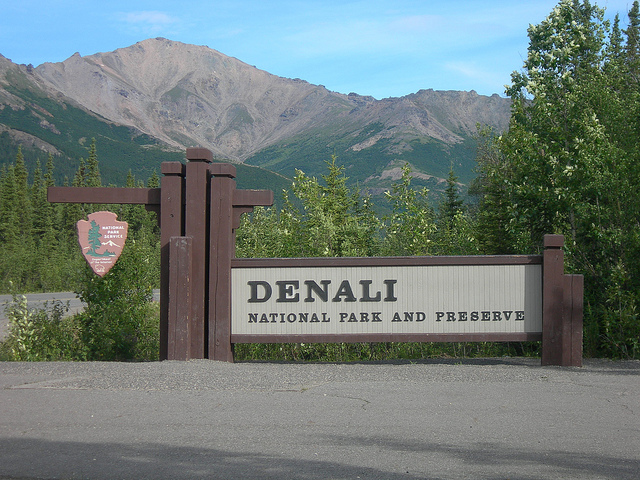One of the big parts of our Social Studies curriculum in third grade is the study of our National Parks as a subtopic of our study of Fifty States. Alaska is the home to 15 national parks, preserves, monuments and historic parks. The Park Service in Alaska also oversees 49 National Historic Landmarks and 16 National Natural Landmarks. The Park Service is rich in resources that you can use in your classroom to help you and your students as you explore the vast, amazing state of Alaska.
In the past couple of weeks we have been lucky enough to Skype with park rangers from two national parks, Yellowstone and Denali. The Yellowstone Skype is a fantastic way to introduce the concept of National Parks and their importance in our world. Skypes with a Yellowstone Ranger can be arranged through Skype in the Classroom: Yellowstone Ranger
One tie into the Iditarod Race is Denali National Park which is home to the nation’s only team of sled dogs who actively patrol a national park. Sled dogs have been crucial to Denali’s operations since its founding in 1917 to assist rangers in patrolling the backcountry of the park. After World War II, airplanes began to replace the dogs and due to budget cuts, the dogs completed their service in 1949. But, by the 1970’s they were again being used. Today they are crucial to the park as much of the park has been declared wilderness and therefore cannot be patrolled by motorized vehicle.
Today the dogs are a cultural resource that helps to preserve the historic and natural resources in Denali. The teams average 3,000 miles a year on patrol and greet and interact with about 50,000 visitors to their kennels each summer.
Denali offers an amazing Distance Learning program via Skype called The Science of Sled Dogs. The rangers will teach the students about five adaptations sled dogs have that allow them to survive in the subarctic: tongue, fur, foot pads, circulation, and tails. The kids quickly discover that these characteristics are ones that mushers also look for in their sled dogs. The rangers lead the kids through two mini science experiments so that the kids can get a strong grasp of the concepts. They also teach them about the positions in the dog team and the qualities each team member needs to have to help the team succeed. The program materials include lessons to use with the kids before and after the Skype session.
You can find more information about Denali’s Distance Learning Program here: Denali Distance Learning
A great way to get your students involved in the National Parks is by challenging them to collect Junior Ranger Badges from various parks as they tie into your curriculum. The Junior Ranger program is a program offered by the National Parks that awards students special badges or patches for learning about and protecting National Parks. Many of the parks require students to be on site to complete the program, but some will allow students to complete the program through the mail or over the internet and will send badges to the school for the students. During the course of a year, my class usually collects ten to twelve badges as class projects that tie directly into our curriculum, another nine or so as extra credit monthly at home challenges, and two in person on field trips! We keep track of our accomplishments on a bulletin board and the boys are always anxious when a new badge arrives!
Here is a lesson plan that includes lots more information about Alaska’s National Parks and the programs they offer (including Junior Ranger Badges): Alaska’s National Parks



